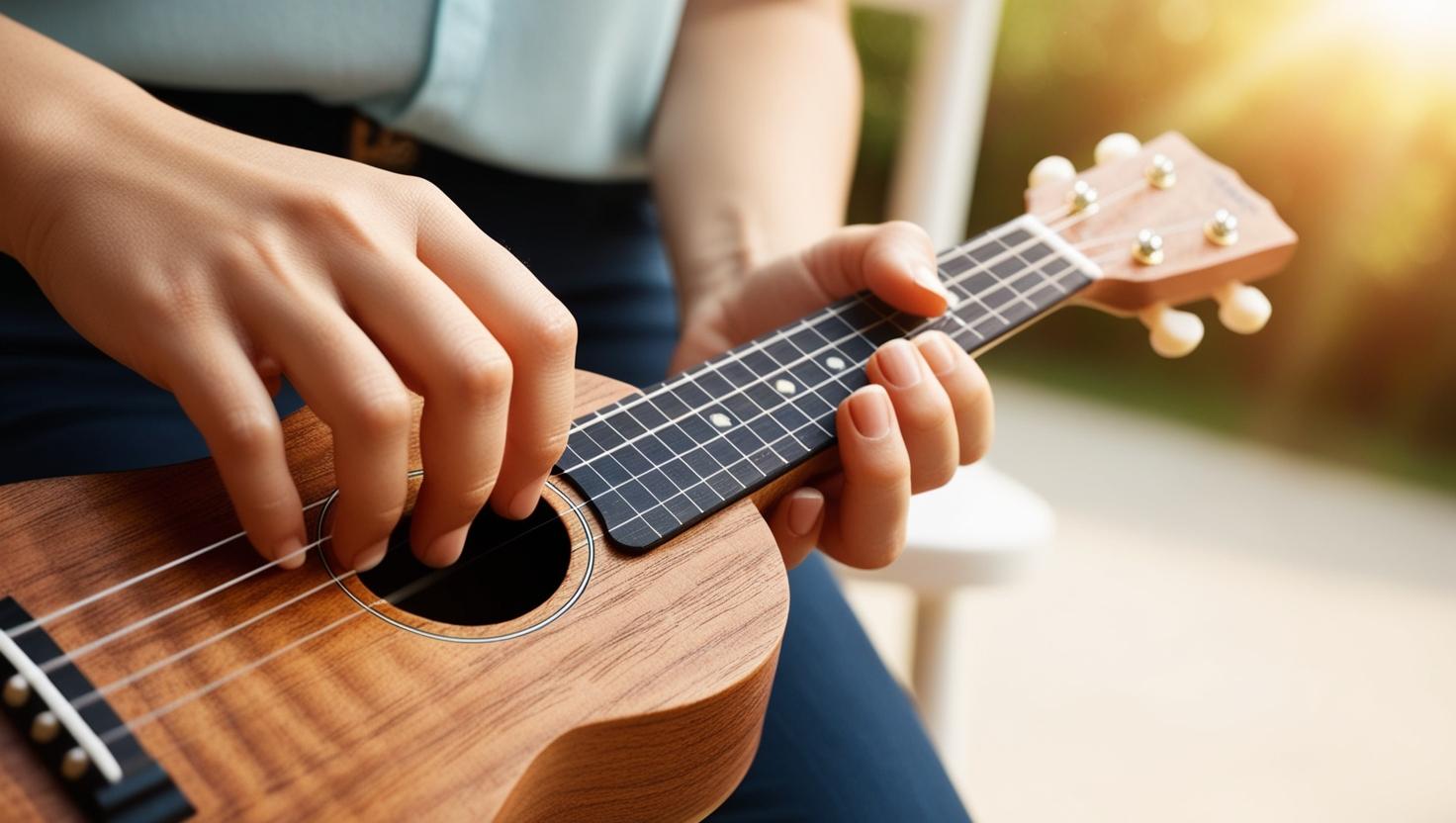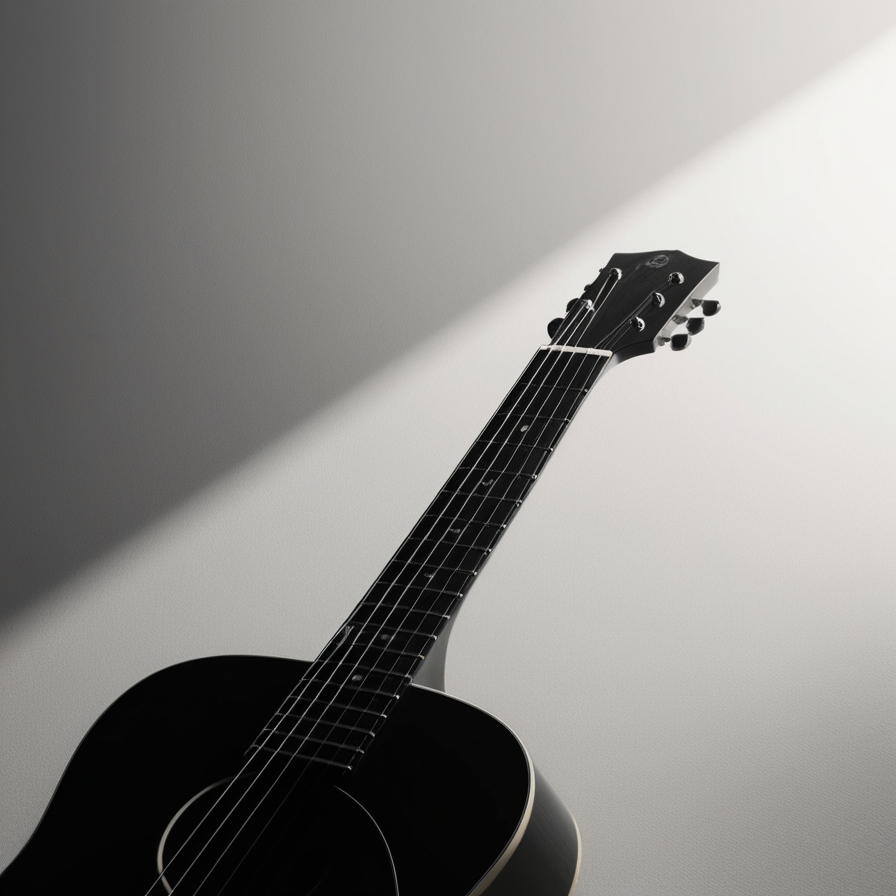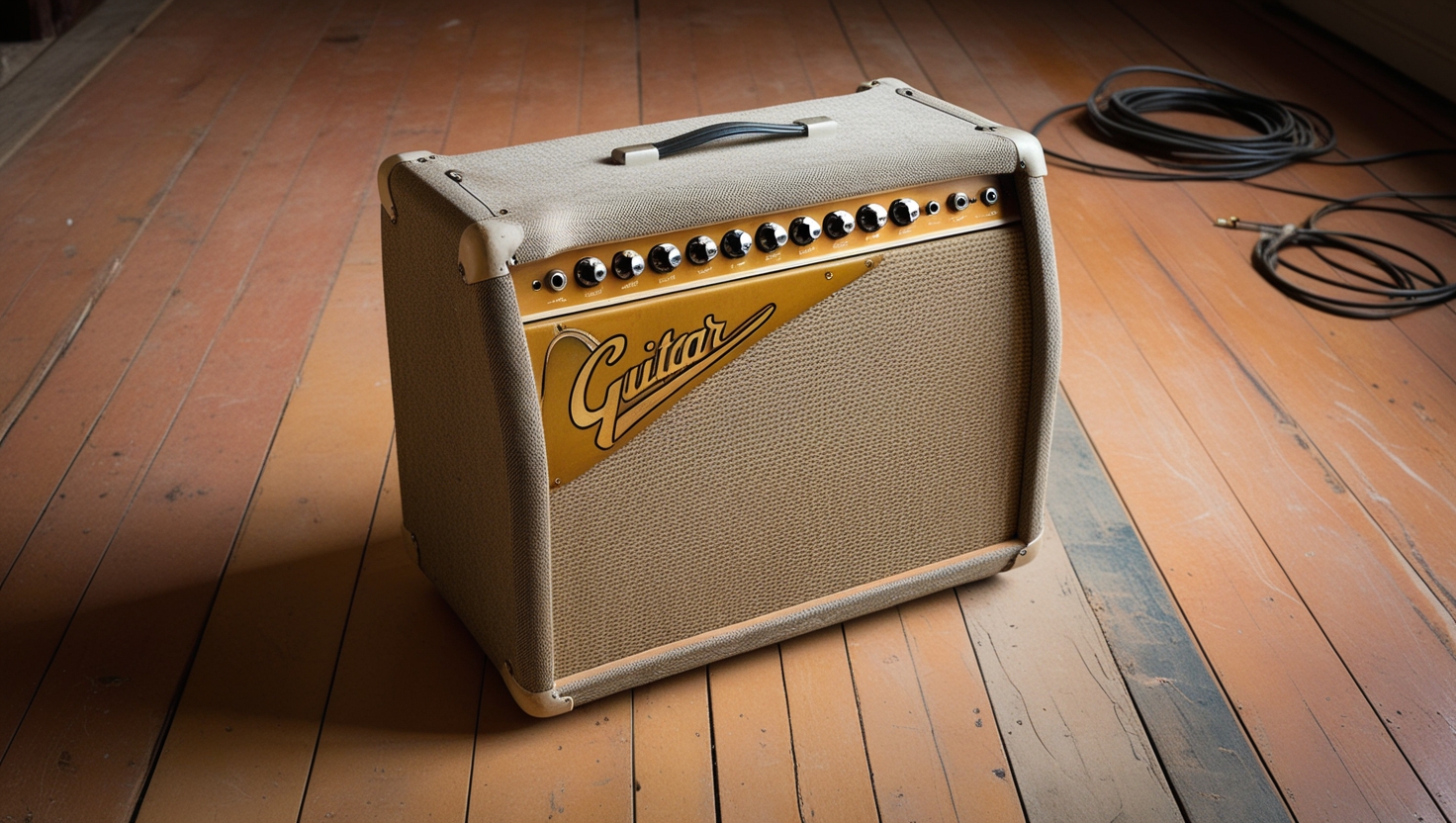A Visual Guide to Mastering Palm Muting Techniques
Janvi Arora
- 10 July, 2024
- 8 min read

Table of Contents
From guitar chords to triads you have learned all the basics of guitar playing. Still, when you play, it doesn’t sound as harmonic as it should, and you are wondering what could be the reason?

Well, one of the most common reasons for not sounding great is not muting guitar strings. Once you learn how to use palm muting with this blog, you will be able to play complex scales and compositions without having to worry about additional sound effects coming out from a guitar.
In here we will explore the palm muting technique, how you can enhance the acoustic performance of your guitar, the sound control technique, and other aspects of muting that you need to know. So, let’s begin!
Understanding Palm Muting: What Is It?
Palm muting is the sub-part of muting techniques where you halt the vibrating of the ringing string by putting your palm across strings at the bridge of the guitar to stop unwanted sound.
The most common technique for palm muting is positioning the picking hand’s edge close to the bridge, selectively dampening strings as needed. Yet, altering the hand’s position by moving it away from the bridge towards the neck can significantly alter the resulting sound.
When learning guitar lessons, your main goal is to play the guitar in such a way that it plays smoothly and all the notes you play feel connected to one another. Thus, when the first note ends, the second note has to begin at the exact same moment. This results in your guitar to sound more lyrical and vocal in nature.
Similar rules apply when you are playing guitar chords; each chord has its beginning, a middle section, and the end part. So even here, you have to make sure that when you are playing, all the chords sound connected to one another, which is also known as legato.
On the other hand, in some cases, you have to purposefully end a note or a chord at the end section at a specific time to create a more dramatic moment during the performance. When this happens, you need to use muting techniques to stop the sound coming from the string, which is used for producing the specific note or a chord.
Want to learn about this technique in more detail? Then check out this lesson on Palm Muting on the Torrins platform!
Selecting the Right Part of Your Hand for Palm Muting
Everyone who uses the palm muting technique will have a slight variation in how they are muting chords. But there is no right or wrong way of doing it. Whatever suits you, you need to follow that.
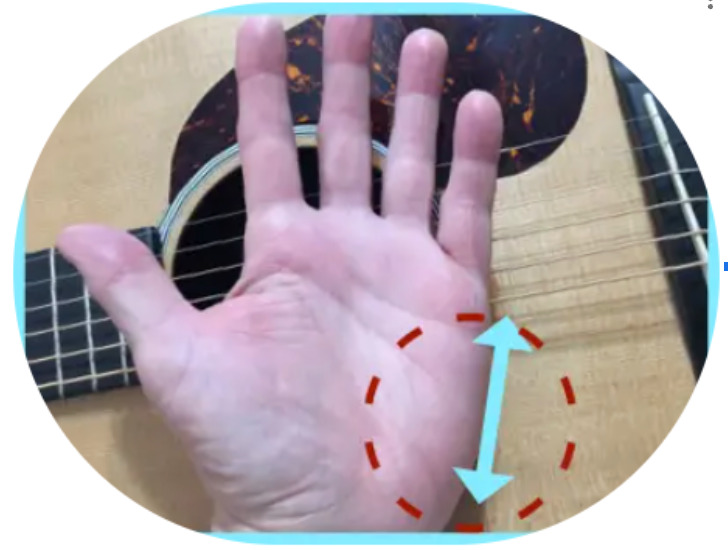
In the image given above, the palm of a hand is highlighted; this is the part you should be using when muting a chord or a note. You should be using the outside part of your palm and place it right on the strings that you want to mute across the bridge of your guitar.
If you haven’t used any of the muting techniques before, it is best that you first strum your guitar without muting any strings and then mute some using the palm of your hand to see the difference in the sound it produces.
Perfecting the Technique: Muting the Strings with Your Right Hand
When you are muting a string, the sound it produces will fade away quite quickly, making the sound more of a thud. The guitar-playing technique is also called chugging.
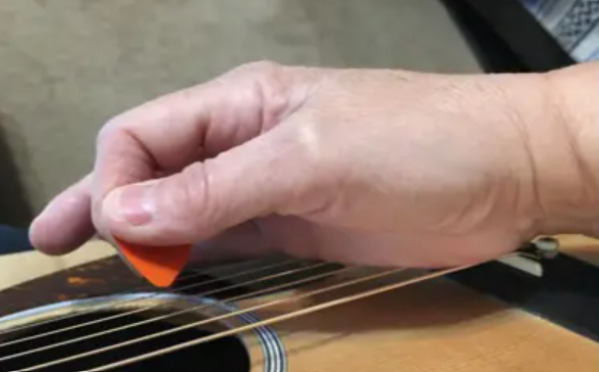
See, when it comes to perfecting the technique, you need to understand that palm muting depends on a number of things, such as:-
- How much of a distortion you are using if you are playing an electric guitar,
- The type of palm muting you want
- Your general style of playing guitar
- How hard you are picking each string
So, when practising palm muting, you have to experiment a little bit to find the sweet spot for yourself.
Sound Control Technique with Your Strumming Hand
Palm muting is one of those techniques in which you can increase or decrease the level of muting depending on the requirement of the song. In order to learn how to do it, here are a few things you need to keep in mind:-
Gently Rest The Soft Part Of Your Palm On The Strings
Your palm has a soft side, which is present at the edge of it. If you want to have a more ringing sound to your chords, then you need to place the palm gently or barely on the strings. Moreover, if you are playing acoustic guitar, you need to firmly place your palm to have a similar effect. The more force you put on the palm, the less of a ringing sound you will produce from the strings.
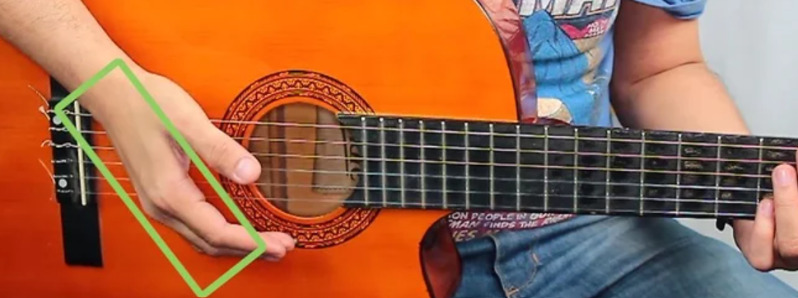
While keeping your palm in contact with the strings, strum as you typically would.
There is no special strumming technique when you are muting strings. So you will be strumming the strings like you normally do when playing different chords. Just remember to keep your strumming hand on the bridge of the guitar.
Modify The Pressure Of Your Palm To Fine-Tune Your Sound.
Just like you have to put pressure on a string by placing your finger on the fret at a specific position. Similarly, you can change the sound by putting pressure on your palm on the bridge. With more pressure, the strings will stop vibrating, and you won’t be able to hear the ringing sound long after you play the string.
On the other hand, if you keep the palm gently at the bridge, the ringing sound will be present. But it won’t be as clear as not muting it at all.
Explore various hand positions for different effects
The fine-tuning of sound can be done by changing the hand positions on the bridge; the closer you place your strumming hand on the bridge, the higher the intensity of the muting. The farther you move from the bridge, the more of a ringing sound you will be able to hear.

Adapt your hand placement to produce specific notes.
Lastly, if you only want the first few strings to sound properly, you must lift that part of your palm, which is used for dampening those notes. Muting specific strings is not easy; as a result, you need to practice palm muting exercises, from Torrins official website whenever possible to master this technique.
Here are a few hand placements that allow you to produce specific notes even when some of the strings are muted.
- Lifting your hand from your wrist.
- Curling up your wrist in an up or down motion in order to mute certain strings with a little bit of practice.
Enhancing Your Acoustic Performance
For muting strings in an acoustic guitar, you are required to put in a bit more work as there is no amplifier connected to it that can amplify the sound. Thus, you have to strum with a bit more force and place your palm firmly on the strings that you want to mute.
Focus on the bridge pickups of your electric guitar for better results.
Bridge pickups are the technique that allows you to produce sounds that are brighter and punchier in nature. Lots of rock band guitarists use it when they are playing riffs on electric guitar. You can use the same technique with palm muting, as both of these techniques complement each other.

You can find a use of these two techniques in guitar Songs
like “Thunderstruck” by AC/DC, “Sweet Child Of Mine” by Guns N Roses, “Welcome To The Jungle” by Guns N Roses, and “Master Of Puppets” by Metallica
Tap in to enjoy the rhythm of guitar song lessons here at Torrins.
Whenever feasible, make use of humbucker pickups.
You can purchase humbucker pickups, and they are useful in reducing the humming noise that comes at the very end of the chord. Music genres like rock, metal, and other high-gains use humbucker pickups to produce warm, powerful sound while keeping the interference as minimal as possible.

Practice transitioning in and out of palm muting while strumming.
Here are a few of the palm muting exercises that you should practice to have a smooth transition in and out of it.
- Play A major scale using palm muting and increase the speed with time
- Play the Chromatic 1-2-3-4 exercise, add palm muting to it, and speed up as much as you can
- Finally, strum any of the power chords with palm muting and use a metronome tool to be precise with the timing.

